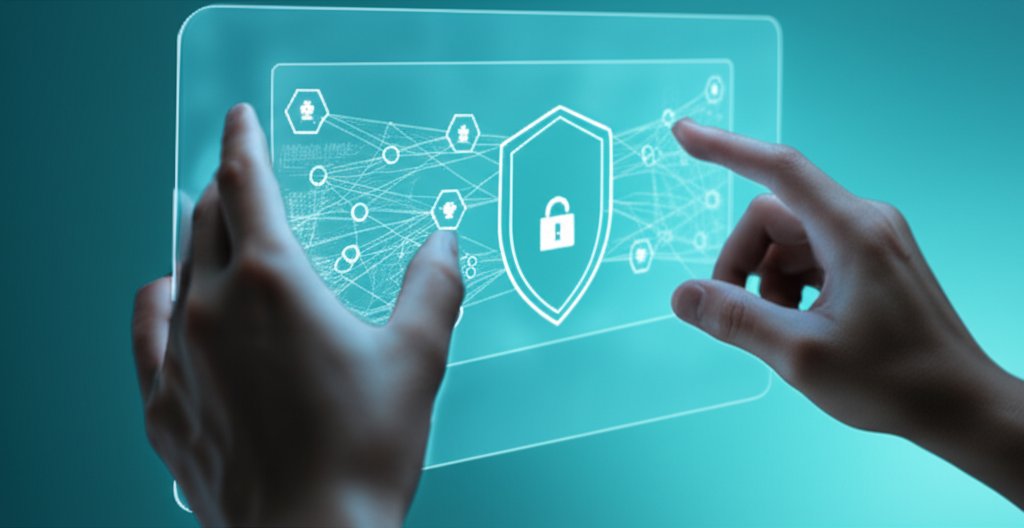Why Multi-Factor Authentication Still Fails: Understanding and Strengthening Your Digital Defenses
You’ve heard it countless times: "Enable Multi-Factor Authentication (MFA)! It’s your best defense against cybercriminals!" And it’s true, MFA is a phenomenal layer of security, dramatically reducing your risk of account compromise. But here’s the critical reality: even with MFA enabled, your accounts aren’t entirely impenetrable. We’ve seen a concerning rise in sophisticated attacks specifically designed to bypass MFA, leading to breaches that impact both individuals and businesses. This isn’t about fear-mongering; it’s about empowering you with the knowledge to build stronger, more resilient digital defenses.
For everyday internet users and small businesses, the digital landscape is a minefield of evolving threats. While MFA remains essential, attackers are constantly refining their tactics to circumvent it. This article will demystify common MFA vulnerabilities, explain how these bypasses work in plain language, and most importantly, equip you with actionable steps to fortify your multi-factor authentication and protect your digital life.
Table of Contents
Before we dive into the vulnerabilities, let’s ensure we’re all on the same page about what MFA is and why it’s a non-negotiable part of modern security.
MFA Basics: What You Need to Know
What is Multi-Factor Authentication (MFA) and why is it important?
Multi-Factor Authentication (MFA) adds an essential layer of security to your online accounts by requiring more than just a password to log in. It typically combines something you know (your password) with something you have (like your phone or a security key) or something you are (your fingerprint). This layered approach makes it significantly harder for unauthorized users to access your accounts, even if they manage to steal your password.
You see, passwords alone aren’t enough anymore. Data breaches happen constantly, exposing millions of credentials. If a criminal gets your password, MFA is what stands between them and your personal information, your bank accounts, or your business data. It’s truly a foundational security measure that everyone, from individuals to small businesses, should implement as a standard practice.
Is MFA truly foolproof, or can it be bypassed?
While MFA significantly boosts your security, it is not entirely foolproof; attackers have developed sophisticated methods to bypass it. These vulnerabilities often exploit human behavior, weaknesses in certain MFA methods, or implementation flaws. This means that while MFA is vital, it isn’t a magical, impenetrable shield.
Think of it like having multiple locks on a door. It’s vastly safer than just one, but a determined and clever thief might still find a way around them — perhaps by tricking you into opening the door, or by finding a weak point in one of the locks themselves. Our goal here isn’t to diminish MFA’s value, but to understand its limitations so we can make our digital defenses even stronger.
Understanding MFA Vulnerabilities
How can phishing attacks bypass Multi-Factor Authentication?
Phishing attacks can bypass MFA by tricking you into entering your credentials and MFA codes onto a fake website controlled by the attacker. In more advanced "Adversary-in-the-Middle" (AiTM) attacks, criminals don’t just mimic a website; they create a malicious site that acts as a real-time relay between you and the legitimate service. Think of it like a digital eavesdropper sitting in the middle of your conversation with your bank. As you enter your credentials and approve your MFA, the attacker intercepts this information instantly, uses it to log into the real service, and then steals your active login session (often by capturing your "session cookie" — a small piece of data that keeps you logged in). This allows them to bypass MFA and access your account without needing your password or code again.
These attacks are incredibly deceptive, often mimicking legitimate login pages perfectly. You might click a link in a fake email, log in, and then approve an MFA request thinking it’s for the real service, when in fact, you’ve just handed over everything to the attacker. Always double-check URLs, verify the sender, and be suspicious of unexpected login prompts.
What is "MFA fatigue" or "prompt bombing"?
MFA fatigue, also known as prompt bombing, occurs when attackers repeatedly send MFA push notifications to your device, hoping you’ll eventually approve one out of annoyance, habit, or confusion. They typically already have your stolen password and are simply trying to log in repeatedly, triggering constant alerts on your phone or other MFA device.
It’s a psychological trick. Imagine getting dozens of alerts late at night. You might think, "What is going on?" and instinctively hit "Approve" just to make them stop, or you might assume it’s a glitch. This moment of weakness is exactly what criminals are counting on. The critical rule is this: If you didn’t initiate the login, never approve an MFA request.
What is SIM swapping and how does it affect MFA?
SIM swapping is a severe form of identity theft where attackers convince your mobile phone carrier to transfer your phone number to a SIM card they control. Once they have your number, they effectively gain control over all calls and SMS messages to that number, including those containing one-time passcodes (OTPs) used for SMS-based MFA.
This attack effectively gives criminals control over one of your critical authentication factors. They can then use your stolen password, request an SMS MFA code, receive it on their device, and gain access to your accounts. It highlights why SMS-based MFA, while significantly better than no MFA, isn’t the most secure option for critical accounts.
Why are SMS and email OTPs considered less secure MFA methods?
SMS and email One-Time Passcodes (OTPs) are considered less secure because they are susceptible to interception, sophisticated phishing, and account takeover of the delivery mechanism itself. SMS messages can be intercepted via SIM swapping or vulnerabilities in carrier networks (like SS7), and email accounts can be compromised, allowing attackers to simply read your OTPs.
These methods rely on communication channels that aren’t inherently designed for high-security authentication. An attacker who gains access to your email account through a separate phishing attack, for example, could then use that access to receive MFA codes for other services linked to that email. It creates a single point of failure that stronger MFA methods are designed to avoid.
Can session hijacking or cookie theft bypass MFA?
Yes, session hijacking and cookie theft can effectively bypass MFA by allowing an attacker to steal your active login session after you’ve already authenticated. Once you successfully log in and pass the MFA check, the service gives your browser a "session cookie." Think of this cookie as a temporary ID badge that proves you’re logged in, allowing you to navigate the site without repeatedly entering your credentials.
If an attacker can steal this digital ID badge (often through malware on your device or sophisticated phishing that intercepts it), they can then present it to the service, making it believe they are you. This grants them access to your account without ever needing your password or an MFA code again. This is why being careful on public Wi-Fi, avoiding suspicious links, and keeping your devices free of malware is so important.
How does human error or lack of user education contribute to MFA failures?
Human error and a lack of user education are major contributors to MFA failures because even the strongest security technology can be undermined by user mistakes or ignorance. Users might unknowingly approve fraudulent MFA requests (prompt bombing), fall for sophisticated phishing schemes, reuse passwords (even with MFA enabled), or prioritize convenience over robust security.
Many people assume MFA is an impenetrable shield, which can lead to complacency. If you don’t understand how sophisticated cybercriminals are, or how specific attacks like prompt bombing work, you might accidentally give them exactly what they need to bypass your security. Education is a key defense, turning users from potential weak links into strong security advocates.
Can poor implementation or misconfigurations make MFA vulnerable?
Absolutely. Even robust MFA solutions can become vulnerable if they’re poorly implemented or misconfigured by IT teams, especially in small businesses. This could involve not enforcing MFA across all critical systems, using weak default settings, or failing to protect against brute-force attacks on the MFA mechanism itself.
For example, if a business only implements MFA on email but not on their cloud storage or CRM, attackers could find a backdoor. Similarly, if the system doesn’t properly log or alert on excessive failed MFA attempts, it could leave a window open for brute-force attacks or other exploits. Proper setup, regular auditing, and adherence to security best practices during implementation are crucial.
Fortifying Your MFA Defenses
What are the strongest Multi-Factor Authentication methods available?
The strongest MFA methods move beyond SMS and email OTPs, focusing on possession factors that are inherently harder to compromise. Authenticator apps (like Google Authenticator, Microsoft Authenticator, or Authy) provide time-based, offline codes, offering a significant upgrade from SMS. Hardware security keys (like YubiKey) offer the highest level of phishing resistance by cryptographically verifying the website’s authenticity before providing a code. Biometrics (fingerprint, face ID) add an inherent factor, often coupled with a device lock, further strengthening security.
For critical accounts, especially those tied to finances or your primary identity, seriously consider upgrading to a hardware security key. They’re specifically designed to resist sophisticated phishing attempts, making them incredibly robust. Authenticator apps are an excellent step up from SMS and should be your minimum standard for general accounts.
What are the best practices for smart usage and everyday MFA security?
For smart usage, always enable MFA wherever it’s offered, especially on email, banking, and social media. Never approve an MFA request you didn’t personally initiate — if you’re not trying to log in, that alert means someone else is! Securely store your backup codes offline in a safe place, and regularly review your connected devices and login activity for any anomalies. Keep your authenticator apps and devices updated to patch any security vulnerabilities.
Educate yourself and your family or team about evolving threats like phishing and prompt bombing. Understanding how attackers operate helps you spot their tricks. Also, if a service offers different MFA options, always choose the strongest one available, prioritizing authenticator apps or hardware keys over SMS or email.
How can small businesses go beyond basic MFA to protect themselves?
Small businesses can significantly enhance MFA security by implementing comprehensive, ongoing employee training on evolving threats and MFA best practices. They should enforce MFA across all critical business systems — email, cloud storage, CRM, financial platforms — not just a select few. It’s also vital to avoid outdated, legacy authentication protocols that don’t support modern MFA.
Furthermore, establish clear internal policies for MFA usage, account recovery, and incident response. Proactively monitor login activity for anomalies, like logins from unusual locations or at strange times. For more complex environments or specialized needs, consulting with cybersecurity experts can help design and implement a robust, business-specific MFA strategy that goes beyond the basics and provides true peace of mind.
Common MFA Headaches & Troubleshooting
How can I troubleshoot common MFA issues like invalid codes or lost devices?
For invalid MFA codes, first, ensure your device’s time is synchronized automatically; incorrect time can cause time-based codes to fail. Also, make sure you’re using the latest code, as they refresh quickly, and you’re selecting the correct account within your authenticator app. If you’ve lost a device with an authenticator app, immediately use your securely stored backup codes to regain access to your accounts. If backup codes aren’t available, utilize any alternative recovery methods you’ve set up with the service provider (e.g., a secondary email or phone if allowed), or contact their support for account reset procedures.
If you’re not receiving SMS or email codes, check your spam or junk folder for emails, verify your phone number and cellular signal for SMS, and ensure you haven’t hit any SMS rate limits from the service provider. For "MFA Authentication Timed Out" messages, simply restart the login process and enter a fresh code, as codes expire quickly for security reasons. Staying calm and systematically checking these points can resolve most common MFA frustrations, ensuring you maintain access to your critical accounts.
Related Questions
Should I use the same authenticator app for all my accounts?
Using one reputable authenticator app (like Authy, Google Authenticator, or Microsoft Authenticator) for all your accounts is often convenient and secure. These apps usually allow you to back up your codes, making recovery easier if you lose your device. However, some security professionals prefer to use different apps for highly critical accounts, adding a slight layer of diversification, though this can complicate management. For most users, one well-managed app is sufficient.
Are there any privacy concerns with using authenticator apps?
Most authenticator apps generate codes offline, meaning they don’t typically transmit data about your logins. However, some apps offer cloud backup features which, while incredibly convenient for recovery, do mean your MFA secrets are stored in the cloud. Review the privacy policy of your chosen app to understand its data handling practices and decide if cloud backup aligns with your comfort level and risk tolerance.
What should I do if I suspect my MFA has been bypassed?
If you suspect your MFA has been bypassed, act immediately. First, change your password for that account and any others that share the same credentials. Report the incident to the service provider, review recent activity logs for unauthorized actions, and consider freezing credit or implementing identity theft monitoring if sensitive data might be involved. Also, reassess your current MFA methods and consider upgrading to stronger options like hardware keys to prevent future incidents.
Conclusion
Understanding why Multi-Factor Authentication can still fail isn’t about undermining its immense value; it’s about making you a more informed and proactive participant in your own digital defense. MFA is undeniably a vital security tool, but its effectiveness hinges on how well you implement and use it, and how aware you are of the evolving threats.
Don’t let the existence of vulnerabilities discourage you. Instead, let them empower you to choose stronger authentication methods, practice vigilant security habits, and continually educate yourself and your team. Your digital security is a journey, not a destination. Take control of it today!
Protect your digital life! Start with a robust password manager and enable the strongest Multi-Factor Authentication options on all your critical accounts today.









